The following ranking highlights the most affordable bachelor’s degrees in Alaska for students looking to further their education. Decades ago, Alaska, the most sparsely populated and largest state in the U.S., made the decision to incorporate technology into their academic system. Since 1981, the Alaska Society of Technology in Education (ASTE) has been used to promote access to technology for all Alaska-based students, increasing the availability of both on-campus and online undergraduate and graduate degree programs.
Many Alaska-based universities and colleges offer amenities to their students with the goal of enhancing their postsecondary experience. These amenities are the schools’ way of standing apart from the crowd for their student initiatives, programs, or specializations. Prospective students may seek a school with a low student-to-faculty ratio in order to gain the individualized academic support they need, while research-minded students may wish to attend a university that offers a digital library, writing center, math lab, and online tutoring and academic advising. Veterans, active-duty service-members, and military personnel may prefer a school that goes out of its way to offer military benefits that go above and beyond the norm.
There are six institutions of higher learning in the Last Frontier, according to the National Center for Education Statistics (NCES) that offer bachelor’s degrees, including multiple campuses of the same school. While common majors in the fields of business, education, and social sciences can be found at these institutions, Alaska-based colleges and universities are known for their programs in the environmental and natural sciences, including biology, conservation, fisheries, and Alaska native studies. To learn more about the exciting, unique, and hands-on educational opportunities that await you, check out the following list of the most affordable bachelor’s degrees in Alaska.
Methodology
Regardless of the career path or major you have chosen, there are hundreds of unique bachelor’s degree programs available at colleges and universities throughout Alaska. Since the process of narrowing down schools based on factors like tuition, graduation rates, and student-to-faculty ratios can be confusing and downright time-consuming, we decided to take it upon ourselves to do some of the hard work for you. Using the National Center for Education Statistics (NCES) College Navigator tool, we conducted a search for the term “colleges in Alaska” and obtained six results as listed below. We also cross-referenced the information and data we obtained about each program with the school’s website to ensure we were providing the most current information possible.
Average Cost of Attendance
When comparing programs, consider whether the schools in Alaska you have put on your short-list offer must-haves that you are looking for in a degree such as extracurriculars, job fairs, concentrations, mentoring, or opportunities for internships. Only after you have a solid understanding of what the program offers should you consider the average cost of attendance. In other words, avoid making a decision based solely on cost but rather use cost as a foundation on which to consider all the program has to offer. For the purpose of this ranking, we listed the tuition based on how much it costs for in-state students to complete 15 hours of courses per semester for one full year. We also provided tuition costs for out-of-state students for your reference as well.
Points:
Under $7,500: 3 points
$7,500 to $15,000: 2 points
$15,001 and above: 1 point
Student-to-Faculty Ratio
Student-to-faculty ratios are a great indicator of the size of the school and, ultimately, the size of the classes. Although some students may not place much importance on class size, others may thrive in a smaller environment rather than a larger setting or vice-versa. Keep your personal preferences and academic background in mind and consider whether you prioritize individualized mentoring, intimate experiences and relationships, and accountability. If so, a smaller setting may be right for you. Although there are certainly benefits and drawbacks to both small private colleges and large state universities, for the purpose of the following article, we awarded the most points to schools with the lowest student-to-faculty ratios.
Points:
10:1 or less: 3 points
11:1 to 15:1: 2 points
Greater than 15:1: 1 point
Graduation Rate
Finally, when determining whether a college or university will meet your academic needs and professional goals, we can turn to data regarding student satisfaction. After all, your goal is to choose an institution, take classes, finish the program, and graduate with a degree in your chosen industry. Although admission rates are a great way to determine a school’s selectivity, it is important to look beyond acceptance and consider how many students actually graduate before you commit a great deal of time and money to a program. Although there are always exceptions, in most cases, it is safe to conclude that colleges and universities with high graduation rates offer affordable, high-quality degrees, employ experienced, helpful faculty members, and provide opportunities for mentoring or academic support. Therefore, we determined that the schools with the highest graduation rates would earn the most points based on the following table.
Points
More than 50 percent: 3 points
Between 30 percent and 50 percent: 2 points
Less than 30 percent: 1 point
Ranking Top 6 Best Affordable Bachelor’s Degree Colleges in Alaska
6. Kenai Peninsula College
Soldotna, Alaska
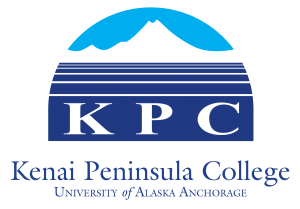
Points: 4
School Website
Founded in 1964, Kenai Peninsula College is affiliated with the University of Alaska Anchorage and operates four locations in Anchorage as well as on Alaska’s Kenai Peninsula. KPC offers a number of affordable classes across various subject areas that lead to a four-year bachelor’s or two-year professional-technical degree. Bachelor’s degrees are available in areas such as psychology, elementary education, natural sciences, and liberal studies. Students benefit from small class sizes that encourage participation, knowledgeable advisors dedicated to helping students select the right pathway, educated and passionate instructors who strive to help their students succeed, and flexible distance learning certificates.
In-State Tuition: $8,070
Out-of-State Tuition: $25,050
Student-to-Faculty Ratio: 14:1
Graduation Rate: N/A
5. University of Alaska Anchorage
Anchorage, Alaska

Points: 5
School Website
Established in 1954 as Anchorage Community College, the University of Alaska Anchorage is the largest university in the University of Alaska System and the largest postsecondary institution in the state. Enrolling more than 15,000 undergraduates, UAA confers a number of low-cost bachelor’s programs, including Bachelor of Arts and Bachelor of Science degrees, a Bachelor of Business Administration, a Bachelor of Fine Arts, a Bachelor of Human Services, a Bachelor of Liberal Studies, and a Bachelor of Music. Online and on-campus programs are offered through the College of Business, College of Arts and Sciences, College of Education, College of Engineering, College of Health, and the Community and Technical College.
In-State Tuition: $8,580
Out-of-State Tuition: $24,762
Student-to-Faculty Ratio: 15:1
Graduation Rate: 24 percent
4. Alaska Pacific University
Anchorage, Alaska
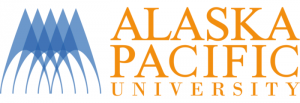
Points: 7
School Website
Established in 1957 as Alaska Methodist University, Alaska Pacific University, located in Anchorage, Alaska, is a small, private liberal arts and sciences institution that emphasizes hands-on, experiential instruction and enrolls fewer than 800 students per year. Affiliated with the United Methodist Church, APU is noted for its student engagement, developing students’ problem-solving and critical thinking skills, applied research projects, and academic rigor. APU organizes its low-cost majors through institutes, and students can pursue undergraduate degrees in business administration and management, Alaska native governance, creative and professional writing, counseling psychology, health sciences, environmental public health, marine and environmental sciences, liberal studies, sustainability studies, outdoor studies, and pre-nursing. Scholarships may be offered in certain Alaska-based industries such as outdoor recreation, education, fisheries, and finance.
In-State Tuition: $20,760
Out-of-State Tuition: $20,760
Student-to-Faculty Ratio: 9:1
Graduation Rate: 53 percent
3. University of Alaska Southeast
Juneau, Alaska
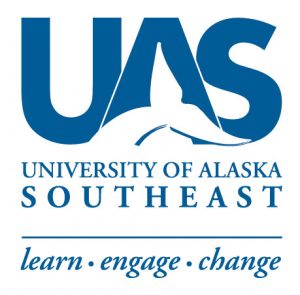
Points: 7
School Website
Established in 1987, the University of Alaska Southeast is a four-year, public university and a member institution of the University of Alaska System. Through its School of Career and Technical Education, School of Arts and Sciences, and its oversight of the Alaska College of Education, UA Southeast enrolls 3,000 students in undergraduate and graduate degree programs. Bachelor’s-level offerings include low-cost B.S., B.A., B.L.A., and B.B.A. programs in social sciences, outdoor studies, mathematics, liberal arts, languages, fisheries, environmental science, English and literature, education, business, biology and marine biology, Alaska native and northwest coast, and geography, environmental, and outdoor studies. Students may pursue an on-campus or online degree, the latter of which involves a blend of e-learning delivery systems.
In-State Tuition: $7,092
Out-of-State Tuition: $19,856
Student-to-Faculty Ratio: 10:1
Graduation Rate: 24 percent
2. University of Alaska Fairbanks
Fairbanks, Alaska

Points: 7
School Website
The flagship campus of the University of Alaska System, the University of Alaska Fairbanks features online learning and seven urban and rural campuses. The school was founded in 1917 as the Alaska Agricultural College and School of Mines, and it now serves approximately 11,000 students with its catalog of on-campus and online programs. The most popular affordable majors for undergraduates include business, marketing, management, mechanical engineering, petroleum engineering, homeland security, natural resources and conservation, biological sciences, and general program/studies. Online offerings include bachelor’s programs in social work, interdisciplinary studies, education, business administration, and accounting as well as rural development and justice.
In-State Tuition: $6,657
Out-of-State Tuition: $20,218
Student-to-Faculty Ratio: 11:1
Graduation Rate: 30 percent
1. Alaska Bible College
Palmer, Alaska
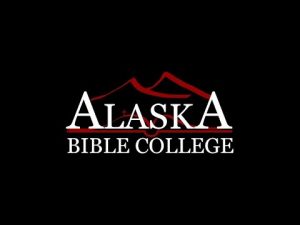
Points: 8
School Website
Located in Palmer, Alaska and established in 1966, Alaska Bible College is an affordable four-year, private institution that also offers extension courses in Glennallen and Anchorage. The school is known for its emphasis on training students, particularly Alaska Natives, for rural ministry in the Far North. ABC offers one four-year Bachelor of Arts in Bible and Christian Ministry, and students can choose one of four emphasis areas: pastoral studies, student ministry, intercultural ministry, or children’s ministry. Although some coursework is also offered online, the B.A. must be completed on-campus. Students may choose a combination of courses that best meet their specific ministry interests, and graduates are equipped with both practical ministry experience and the knowledge of God’s Word to become and serve as effective leaders.
In-State Tuition: $9,600
Out-of-State Tuition: $9,600
Student-to-Faculty Ratio: 8:1
Graduation Rate: 57 percent
Frequently Asked Questions
How Much Do Alaskan College Graduates Earn?
College graduates throughout the U.S. typically enjoy higher earnings and better job opportunities than those with a high school diploma, and in Alaska, the state is making special efforts to develop a college-going culture, which we discuss in depth a little later. Some of the most popular careers are attained via apprenticeships, and the occupation as a whole earned $52,818 in 2014, the most recent data available, which is 35 percent more than $38,995, the average for all Alaska workers. The highest-paying wages for occupations after apprenticeships were:
- Electricians
- Sheet Metal Workers
- Plumbers, Pipefitters, Steamfitters
- Engineers and Construction Equipment Operators
- Electrical Power-Line Repairers and Installers
- Heavy and Tractor-Trailer Truck Drivers
What Are the Job Prospects in Alaska?
Over the past several years, a few Alaskan industries have noted decreasing employment numbers, including construction, the gas and oil sector, and industries dependent on consumer buying such as the retail and nonprofit industries. On the other hand, industries that require a college degree have noted rapid growth. The finance industry is stable, and employers in financial management and auditing and accounting are offering more-than-average job openings. Similarly, demand for workers in the healthcare industry continues to increase, with careers as nursing assistants, medical assistants, and registered nurses showing high availability across Alaska. Also on the upswing are professional and business services such as positions in scientific testing and business operations specialists.
How Do You Find the Right College That Offers a Bachelor’s Degree For You?
Ideally, the best method to determine whether a particular school in Alaska offers an online or on-campus program in your intended field of study is to contact the schools directly. However, you may also consult the Alaska Commission on Postsecondary Education and its website to narrow down your search a little further. The site is also a fantastic resource for creating a career and personal learning plan. If you are a high school student, simply login in through your school’s account and establish a username and password.
How Can You Earn a Bachelor’s Degree in Alaska Without Breaking the Bank?
As you make your way through the above list, you might be wondering how Alaskans can earn a college degree without draining their wallets. Keep in mind that merit scholarships are generous. Alaska is suffering from “brain drain,” or the effect of high-achievers moving out of the state right after high school. As a result, various colleges and universities, as well as the state itself, are offering generous scholarships to prospective students with the goal of encouraging in-state studies. One of the most well-known examples is the Alaska Scholars Program offered by the University of Alaska that awards partial four-year scholarships to the best high school students. In 2018, the award totaled $12,000 for the entire program.
Keep in mind that it is futile to pay attention only to advertised tuition rates. In any U.S. state, the cost of a college degree can be astronomical, but most students pay full price for their education. Rather, many students seek assistance in the form of financial aid to help offset the cost of tuition. The amount to which a student is eligible depends on a number of factors such as enrollment status, degree, and income.
Also, students who are concerned about the cost of tuition may consider pursuing an online program rather than a traditional on-campus degree. Online learning is generally more affordable than in-person learning, namely because students can save money on childcare, commuting, food, housing, and more. In addition, depending on the school, students may benefit from reduced tuition rates per credit hour. Thanks to Alaska’s membership in the Western Undergraduate Exchange, Alaskans get discounts on earning their degree from more than 150 institutions in 13 states: Wyoming, Washington, Utah, South Dakota, Oregon, North Dakota, New Mexico, Nevada, Montana, Idaho, Hawaii, Colorado, California, and Arizona.
Are There Any College Assistance and Planning Programs in Alaska?
The earlier you begin to prepare for your college experience, the better. Therefore, the Alaska Commission on Postsecondary Education has created a number of programs designed to help prospective and high school students prepare for entrance examinations and admissions tests, apply for financial aid, and explore career goals. These helpful programs and resources include:
- Money $marts: Designed to arm current Alaskan college students and recent graduates with critical money-management skills, this free online resource teaches students the right way to handle their finances. From paying off student loans in a timely manner and understanding the financial benefits of earning a college degree to understanding credit scores and setting a monthly budget, this site is an invaluable resource for students looking to keep their debt to a minimum.
- College Goal Alaska: College Goal Alaska is a series of events held in 25 different communities where prospective students and their families can get assistance filling out the Free Application for Federal Student Aid (FAFSA) paperwork — at no cost. Both financial aid experts and volunteers are available to lend assistance and answer questions. All students should bring identification and the appropriate tax forms, while dependent students should also bring a legal guardian or parent.
- Alaska College and Career Advising Consortium: The goal of the ACAC is to encourage high school students to pursue higher education and, ultimately, high-skill career paths. The initiative involves sending recent college graduates to high schools to help bridge the gap between students and postsecondary institutions. These mentors are responsible for helping students apply for financial aid, research college options, register for SAT and ACT examinations, and map out their career paths. With fewer than 50 percent of high school graduates in Alaska attending college, the ACAC aims to boost the state’s higher education enrollment rate.
Is Accreditation Important When Earning a Bachelor’s Degree?
As more Alaskan students are responding to the state’s efforts to boost college enrollment, more colleges and universities are developing and implementing online programs to meet this growing demand. Whether you pursue an online program or an on-campus degree, one this is for sure: It is vital that you select a school that is accredited. Accreditation indicates that a postsecondary institution is operating according to the highest standards and is offering quality programs, and in Alaska, schools may hold regional, national, and/or specialized accreditation. Being accredited also serves to ensure that online students are receiving the same education as their on-campus peers. Some examples of Alaska’s accrediting bodies include:
- Regional Accreditation: the Northwest Commission on Colleges and Universities, accrediting private and public universities and colleges in Alaska, Washington, Utah, Oregon, Nevada, Montana, and Idaho.
- National Accreditation: the Association for Biblical Higher Education, accrediting several of Alaska’s religious-based institutions of higher education.
- Specialized Accreditation: subject-specific accreditations such as the Council for the Accreditation of Educator Preparation (CAEP) or the National Association of Schools of Art and Design (NASAD).
Although Alaska might appear to have limited postsecondary opportunities, namely due to low population and remote location, a closer look reveals otherwise. Students who reside close to major cities may attend one of three University of Alaska campuses or Alaska Pacific University, while smaller towns are home to several Christian colleges and technical schools. In addition, several four-year, Alaska-based colleges provide more than 100 online degree programs between them via distance learning, making a college degree accessible for any student with an Internet connection. We hope that our list of the most affordable bachelor’s degrees in Alaska serves as a starting point as you begin your college search.
AS Staff
This concludes our ranking of the top six most affordable bachelor’s degree colleges in Alaska.
Other Rankings of Interest:
25 Best Affordable Online Business Administration Degree Programs (Master’s)
40 Best Affordable One-Year Accelerated Master’s Degree Programs
50 Most Affordable Colleges with the Best Return
25 Best Affordable Online Mathematics/ Statistics Education Degree Programs (Master’s)
25 Most Affordable Master’s of Statistics Degrees
20 Best Affordable Online Colleges for Computer Networking Degree
The 10 Most Affordable Law Schools in the United States
15 Best Affordable Animation Degree Programs (Bachelor’s)
40 Best Affordable Pre-Med Degree Programs (Bachelor’s)
15 Best Affordable Film Studies Degree Programs (Bachelor’s)
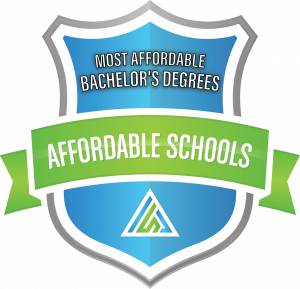
 The Best Colleges
The Best Colleges The Lowest Costs
The Lowest Costs The Highest Returns
The Highest Returns